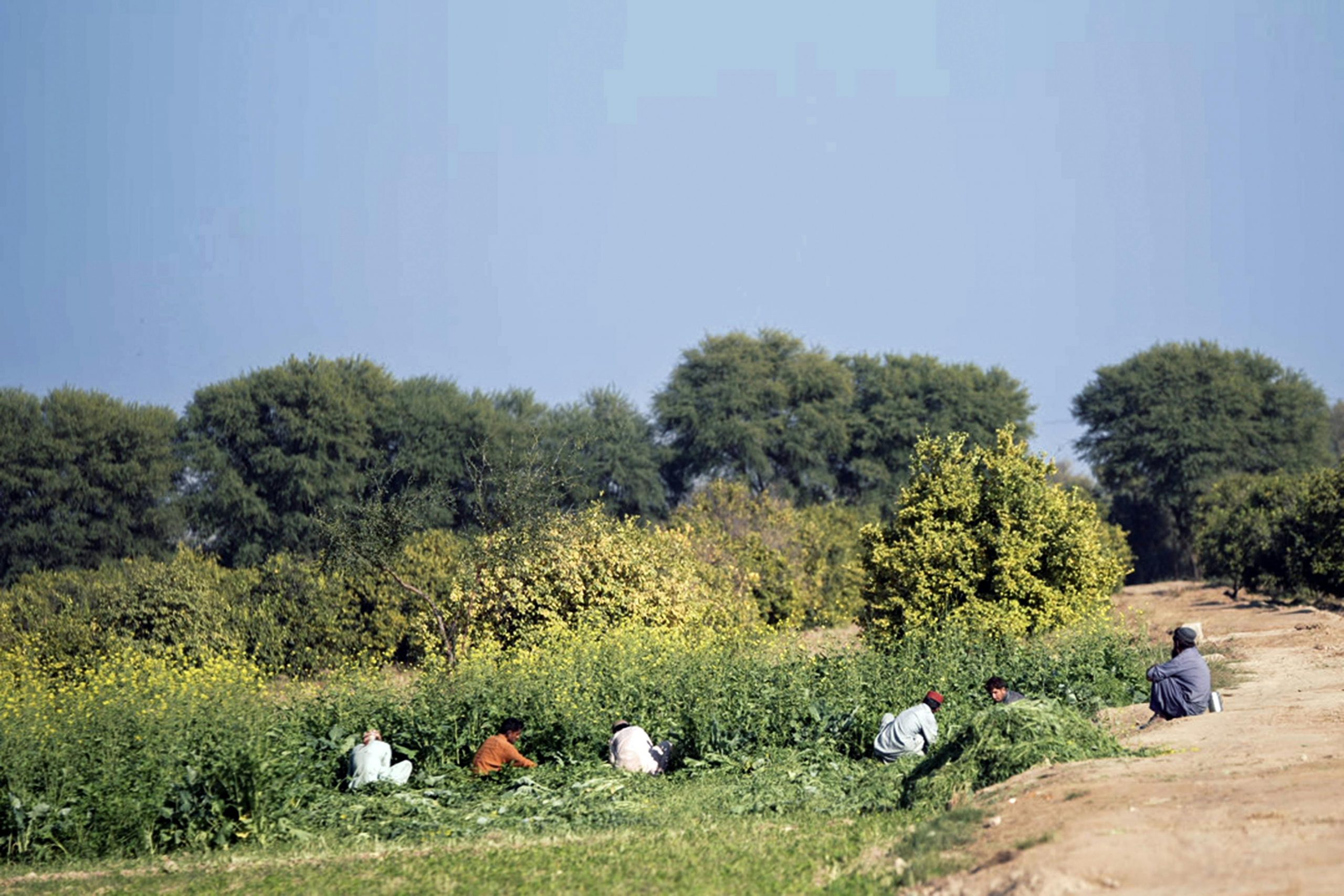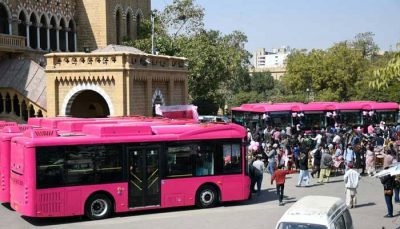Without a guiding framework, public spending in Balochistan remains ad-hoc, discrete, inefficient and weakly aligned with actual development needs of the province. The province needs a spatial approach that links investments with territorial/spatial realities towards it’s future development. Development decisions that come from a system based on a spatial strategy are inclined to be more inclusive and focused on integrated solutions, unlike what is achieved in a sectoral or departmental decision-making process. Often outcomes in one department or sector are linked to or are the result of investments in another sector. This kind of analytical thinking and ability to create linkages is not possible in the absence of an integrated Spatial Strategy. Underpinning the success of any spatial strategy is an underlying decision-making tool that can provide data and evidence needed to make critical investment decisions. The government of Balochistan is not only working towards developing a spatial strategy but has also requested researchers at the International Growth Center to help pilot its first ever decision support tool that will help operationalize this strategy.
Improving planning through Spatial Decision Support Tools
In a fiscally restrained environment, there is mounting pressure on provincial governments to on the one hand respond to the immediate needs arising out of the COVID-19 crisis and on the other continue to manage and contain costs of service delivery. Policymakers and planners are often beset by a number of competing and sometimes, conflicting demands around service delivery to meet the needs of the population. Ensuring coverage for a dispersed population especially in a province like Balochistan it is important to rationalize public investments and make allocations keeping in mind needs of both rural and urban areas.
Against this backdrop, there is a growing emphasis on well-informed public planning and perceptive resource allocation. For this to happen, sound decision-making needs to be grounded in reality, on-going and forward-looking, aimed at specific goals strategized along with the means to attain those goals. For such evidence-based planning, it is important that policymakers have access to data needed to inform these decisions. Essentially, they require a tool that provides the capability to draw on, and integrate, existing data and configure and model various options in service delivery allocations. A spatial decision support system (SDSS) that relies on spatial data can provide this capability.
What is a spatial decision support tool?
Spatial data is data that is connected to a location – in specific a place on the earth. Any kind of spatial decision-making uses geographic data to make decisions. An SDSS in particular merges spatial and non-spatial data, uses specific decision models and computes an optimal solution or many solutions along with trade-offs. Such a system can support decision-making around site selection, resource allocation, routing, service delivery/coverage etc and can be an important tool for planning by policymakers.
Such decision tools have become more feasible ever since big and open source spatial and non-spatial data has become increasingly accessible and begun replacing the more traditional decision support tools. Compared to such tools an SDSS relies far more extensively on relevant external data than just internal organization/administrative data. An advanced level of DSS, in addition to the provision of real time data, can also help in predictive and prescriptive data analytics by building scenarios, providing options and sensitivity analysis, towards an optimum investment decision.
As an example, relevant government departments across Pakistan typically conduct location analysis to build primary schools or basic health units. The inclusion of external data such as detailed road networks, demographic and utility data can greatly enhance the quality of decisionmaking to identify feasible locations. Such data would also provide a richer representation of spatial problems of considerable value to decision-makers. Without integrating these sources of data, governments may end up building a school where road infrastructure is poor. Moreover, integrated data sets also discourage politically driven investments and help align public investments with real development needs across different regions and sectors.
Piloting for Balochistan
The IGC’s first engagement in Balochistan supported the provincial government in developing the contours of a spatial strategy, what it would entail and what kind of data would be needed to support it. A natural progression in the process of implementing such a strategy was an IT-based Decision Support System with the objective of supporting evidence-based and responsive decisionmaking. Such a system can provide real-time integrated data for multiple sectors allowing policymakers to develop an improved and more comprehensive, picture of development needs, potential impacts of policy interventions, and undertake future investments.
A key development sector in Balochistan is infrastructure. Infrastructure planning is a complex task and involves large investments as part of the public expenditure portfolio and at the same time is acknowledged as a major factor for economic growth. Infrastructure spending also has important social, economic and environmental impacts.
The pilot SDSS for road infrastructure for Government of Balochistan was built using a range of information from multiple data sources (mostly open) to encourage a data-driven approach towards planning for road/infrastructure projects.
Using data effectively
The primary tool that helps planners untangle complexities of regional planning is data in the form of administrative boundaries, population clusters and densities, connectivity and mobility via roads, railways, and airports, natural resource distribution, industrial clusters, distribution of built-up area vs. agricultural land, as well as population demographics. This data on its own while telling in a number of ways does not allow policymakers to develop a complete understanding of the region and must be used in conjunction with maps and other forms of spatial analysis to allow spatial visualization and coordination. The SDSS for Balochistan relied on the following data sources.
| Data (Layers) | Source | |
| 1 | Population | Block level spatial data from PBS |
| 2 | Road network (National Highways, Motorway, Intercity) | National Transport Research Centre |
| 4 | Railway line, Railway stations | Board of Investment Interactive Map (https://invest.gov.pk/interactive-map) Wikipedia, OSM, Google Maps |
| 5 | Airports | Board of Investment Interactive Map (https://invest.gov.pk/interactive-map), UN-OCHA, OpenStreetMap (OSM), Google Maps , |
| 6 | Dry ports | Board of Investment Interactive Map (https://invest.gov.pk/interactive-map), UN -OCHA, OpenStreetMap (OSM), Google Maps , |
| 7 | Human Settlements, land cover, built up area, forests etc. | Open source spatial databanks – Extracted from satellite images |
| 8 | Education facilities (University, College, Schools) | Education Department http://emis.gob.pk/Views/Gis/FrmGis3.aspx |
| 9 | Provincial Assembly Boundary | ECP https://www.ecp.gov.pk/frmGenericPage.aspx?PageID=3142, https://data.humdata.org/dataset/provincial-regional-constituency-boundaries-pakistan |
| 10 | Health Facilities (DHQ, THQ, BHU) | Health Department – A public dataset available on UN –OCHA spatial databank |
| 11 | Special Economic Zones | Board of Investment Interactive Map (https://invest.gov.pk/interactive-map) The locations digitized using google earth/map. |
| 12 | Administrative Boundaries (District , Tehsil) | Open source spatial databanks |
| 13 | CPEC Routes | National Highway Authority Interactive Map |
| 14 | Expenditure on road sector for last 10 years | P&D department, C&W |
Typically, spatial analysis starts with a base map, or layer, upon which multiple other layers are applied. The base layer in this case were the borders of Balochistan, on top of which layers showing administrative boundaries at the district, tehsil, and where possible, mauza level, were applied. Visualizing data points such as population, income, housing stock, connectivity, industrial and agricultural growth, and the spread of public services such as health and education can enable policymakers to effectively gauge how the region is evolving, what is holding back economic and social development, and how future changes might affect inhabitants.
Mapping of human settlements, or population clusters was critical as there is limited analysis of population densities, distribution and human settlement patterns across Balochistan. A population density map using census data at the lowest administrative level will help the government identify the size and distribution of population clusters, evaluate the most appropriate unit for service delivery, and plan for compact growth in the future. Overlaying population data with other data layers (housing, health, education) further help the government develop appropriate strategies for service provision, infrastructure development, and long-term consolidation/growth. Likewise, a population growth map with projected population figures, breakdowns by age can support government’s future planning efforts.
The interface is usually a simple dashboard that allows multiple levels of access to different categories of users. The pilot system can allow policymakers visually see how services are being distributed across the province.

By generating simple heat maps, it is also possible to see which districts have the most spending on road infrastructure projects.

More complex analysis can also be performed. The pilot SDSS provides data to simplify the process of decision-making around investments linked to road infrastructure projects. It does so by assigning a score to a potential scheme across a list of criteria. A summary version of such a scoring system is displayed below.


This will then produce a summary result like this. By setting a threshold, the score can help decide whether this spending is worth considering.

Challenge ahead
Existing data would only be beneficial if it can be combined with new primary data, and many policy questions will only be answered by combining new data with existing data such as demographics. It is unlikely, however, that much of this data will be readily available, especially in the form of spatial datasets across all sectors. As result, most of this will have to be collected or generated by using tools such primary and secondary data collection, image processing, remote sensing and use of Big Data generated by cellphone usage, and geographic information system (GIS) based digitization to demarcate tehsil and mauza boundaries.
The size of the challenge that simply collecting and/r generating data represents can also not be understated. The key decisions here include how to collect new data, optimize use of existing datasets and develop skills and human resource capacity to not only collect and collate data, but also maintain and regularly update it. Even sharing, accessing and merging data from various departments can be a challenge. Data collection is also a costly process.
An important caveat that must be kept in mind while collecting data and developing the tool is that the benefits of more data do not always outweigh the costs. As such, all efforts at data collection must be guided by specific policy questions and must be supported throughout by stakeholder buy-in, fundamental the success of any policy tool that is meant to help government make better decisions.





